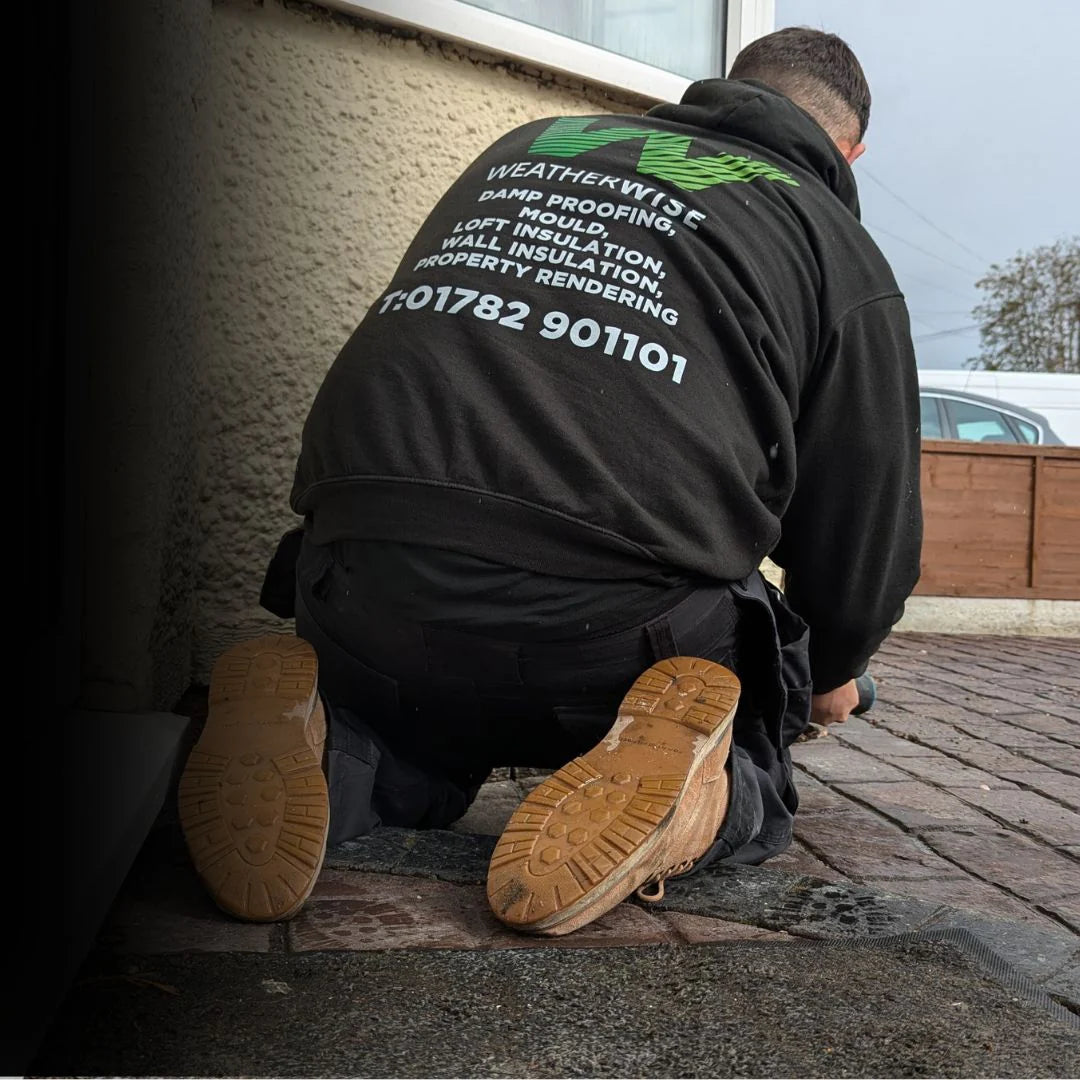🧱 When Cavity Wall Insulation Traps Moisture Instead of Preventing It
In Mold and across North Wales, many homes have been retrofitted with cavity wall insulation (CWI) to improve energy efficiency. But what happens when that insulation starts causing damp?
If your walls are showing dark patches, peeling paint, or musty smells, you may be dealing with penetrating damp caused by failed or incorrectly installed CWI.
At Weather Wise Solutions, we inspect properties across the Mold area suffering from insulation-related moisture ingress — and help homeowners understand the best course of action.
🧪 How Does Cavity Wall Insulation Cause Damp?
CWI works by filling the space between the inner and outer walls with insulating material. But if installed incorrectly — or if the property wasn’t suitable in the first place — it can cause more harm than good.
Common causes include:
-
Insulation bridging moisture across the cavity
-
Insulation becoming waterlogged from external rain
-
Debris or mortar droppings allowing moisture to track
-
Walls without proper damp protection (e.g. spalled bricks, blown render)
-
CWI installed in coastal or wind-driven rain zones like North Wales
🌧️ Warning Signs of Cavity Wall Damp
-
Damp patches in mid-wall or corner sections (not just at the bottom)
-
Damp appearing after heavy rain or storms
-
Paint or plaster bubbling on external-facing walls
-
Moisture readings that spike at mid-height
-
No damp proof course failure found, but walls still damp
If you live in Mold or surrounding areas, this issue is particularly common in 1960s–1990s cavity brick homes with roughcast or rendered finishes.
🛠️ What Can Be Done?
1. Inspection:
We conduct full cavity inspections using borescopes, moisture meters, and thermal imaging to confirm whether CWI is the problem.
2. External Repairs:
If render or pointing is damaged, water may be getting into the cavity from outside. We may recommend:
-
Wall coatings
-
Re-pointing
-
Render repairs or removal
3. Cavity Cleaning or Partial Removal:
In severe cases, insulation may need to be professionally extracted.
4. Internal Damp Treatment:
Once the source is controlled, we can apply breathable salt-resistant plaster systems inside to restore the wall surface.
🏠 Cavity Wall Damp in Mold – A Local Problem
Mold and surrounding towns (like Buckley, Sychdyn, and Mynydd Isa) are exposed to wind-driven rain, especially on gable walls and exposed elevations. Combined with older insulation schemes, this creates a perfect storm for penetrating cavity damp.
👷♂️ Why Choose Weather Wise Solutions?
-
✅ Cavity and moisture diagnostics
-
✅ Breathable internal finishes
-
✅ Wall coatings and render advice
-
✅ Members of the Damp Proofing Association
-
✅ Backed by the Federation of Damp
We never recommend unnecessary work — only what’s required to solve the issue long-term.
📞 Book a Free Damp Inspection in Mold, North Wales
https://weatherwiseuk.co.uk/pages/contact
FAQs
Does all cavity wall insulation cause damp?
No — but in unsuitable properties or exposed areas like Mold, it often leads to problems if not installed properly.
Can I just treat the damp internally?
Only if the source is first fixed. Otherwise, the damp will return no matter what you do inside.
Is cavity insulation removal expensive?
It depends on access and extent, but in serious cases it’s the most effective long-term solution.



